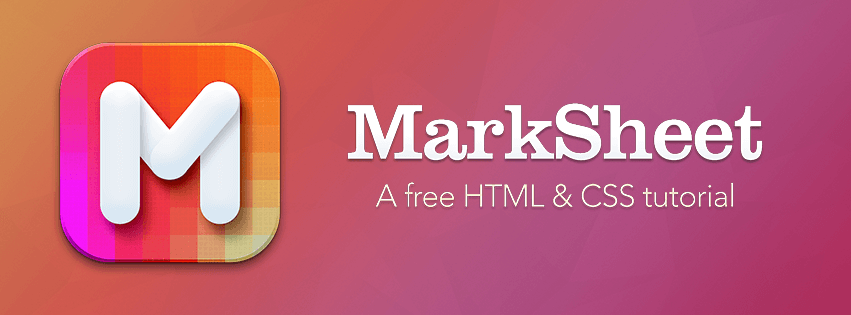Marksheet: a free HTML and CSS tutorial
The content of this project itself is licensed under the Creative Commons Attribution-NonCommercial-ShareAlike 4.0 International License.
The underlying source code used to format and display that content is licensed under the MIT license.







